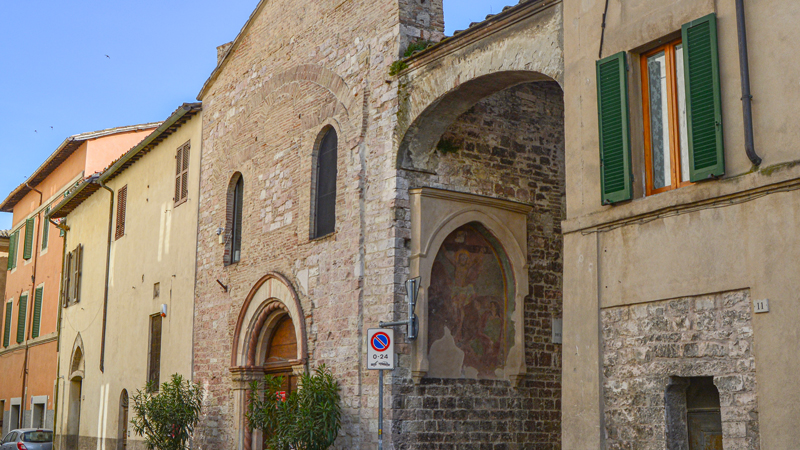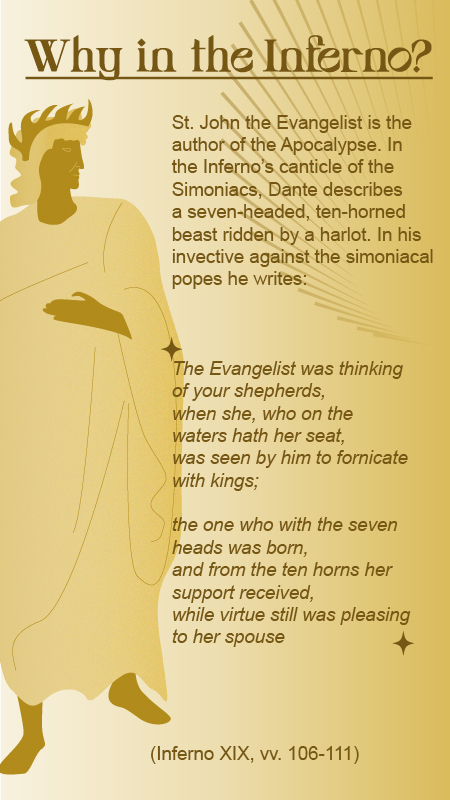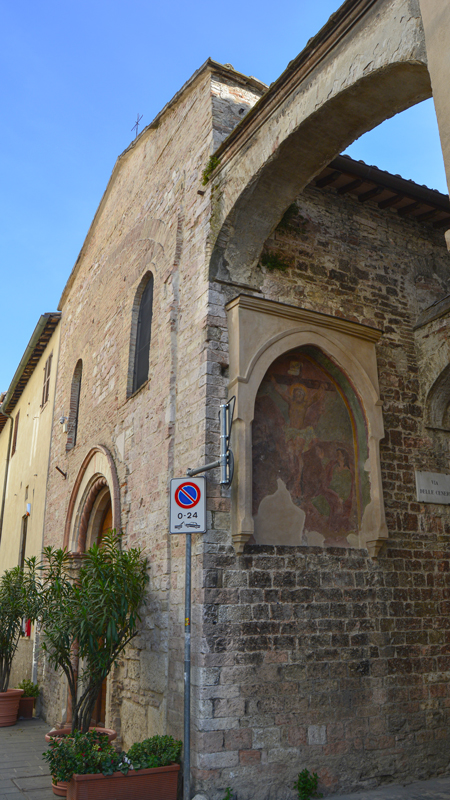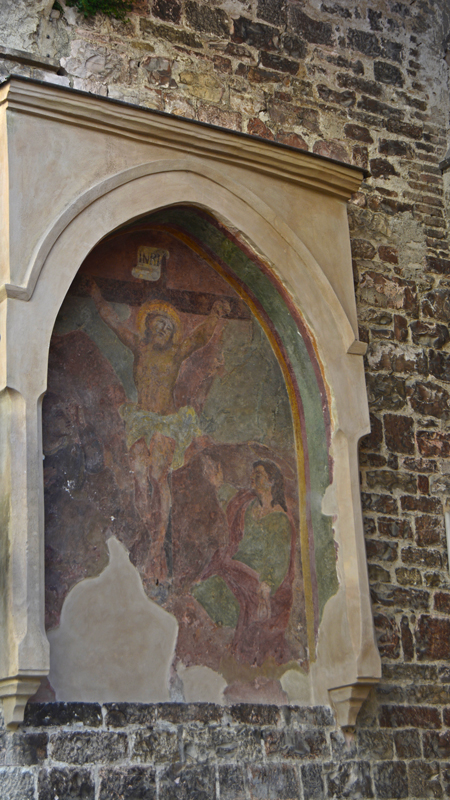The church is so named due to its proximity to the Topino river and it was built in the second half of the fourteenth century, although the church is already mentioned in 1239. Originally built with two naves, in 1776 one was turned into the current church, while the other into a sacristy, nonetheless retaining its primitive Gothic structure and some of the frescoes along the walls. The facade has two large arched windows to ensure internal lighting. The very refined decorated portal has three recessed orders with the central one sculpted as a twisted column. The capitals are decorated with acanthus leaves and carved faces. The interior once conserved a Saint John the Evangelist (1884) by Carlo Botti, today kept in the warehouses of the Diocese together with the eighteenth-century paintings that decorated the main altar. A wooden statue of Sant’Apollonia attributed to Antonio Calcioni is now exhibited in the Bishop’s Seat. Outside, on the wall that turns onto Via delle Ceneri, there is a shrine with a 15th-century fresco. Today the church is used for Orthodox worship.

Il progetto Divina Foligno è sviluppato nell’ambito del “programma Agenda urbana di Foligno Smart community - Comunità, Sostenibilità – Foligno 2020” intervento OT.6 INT_01 “Realizzazione della rete di attrattori culturali attraverso la realizzazione di itinerari culturali e tematici

The Divina Foligno project is promoted and financed as part of the "Urban Agenda of Foligno Smart community - Community, Sustainability - Foligno 2020 program" intervention OT.6 INT_01 "Creation of a network of cultural attractions through the creation of cultural and thematic itineraries"

Copyright © 2022 Landmark. All rights reserved.





